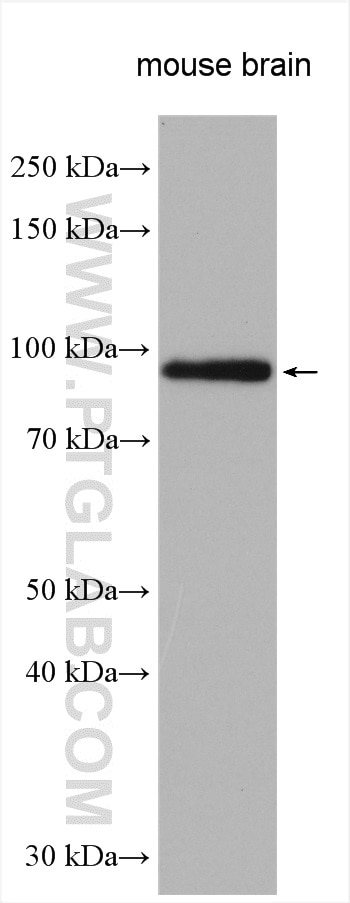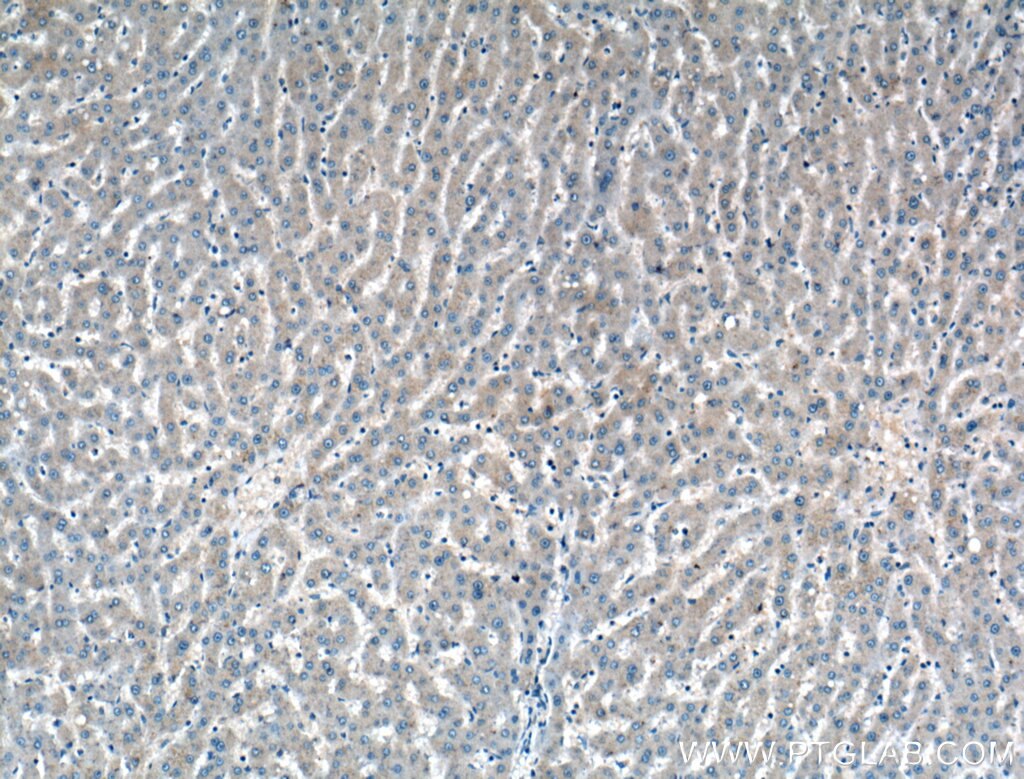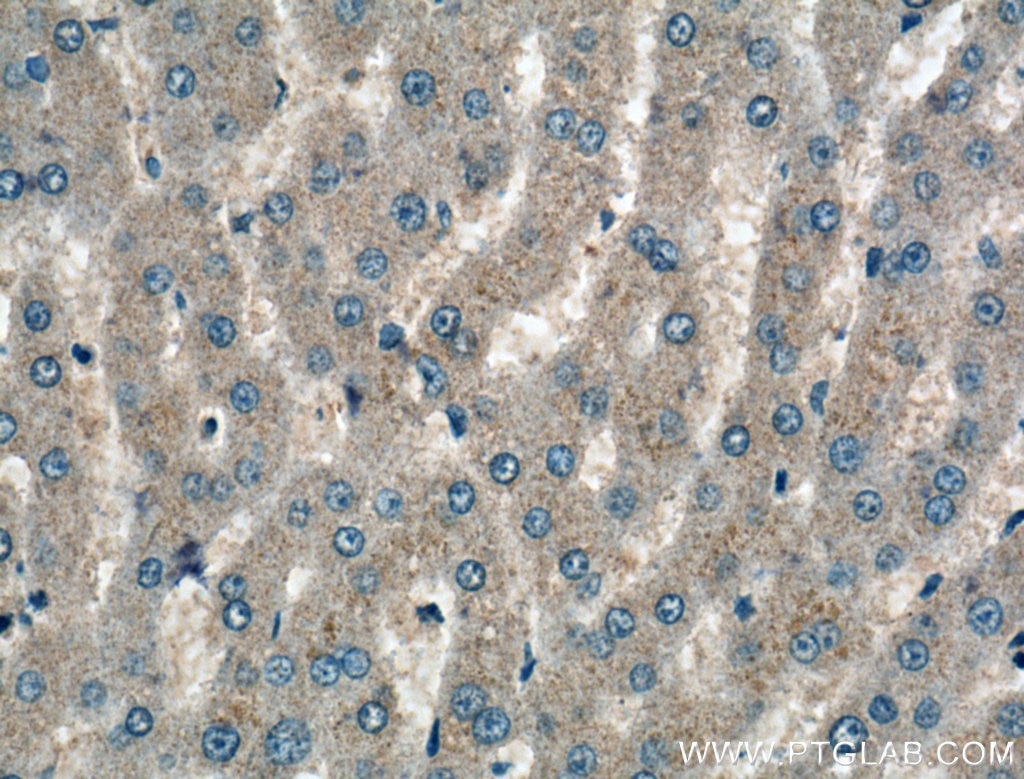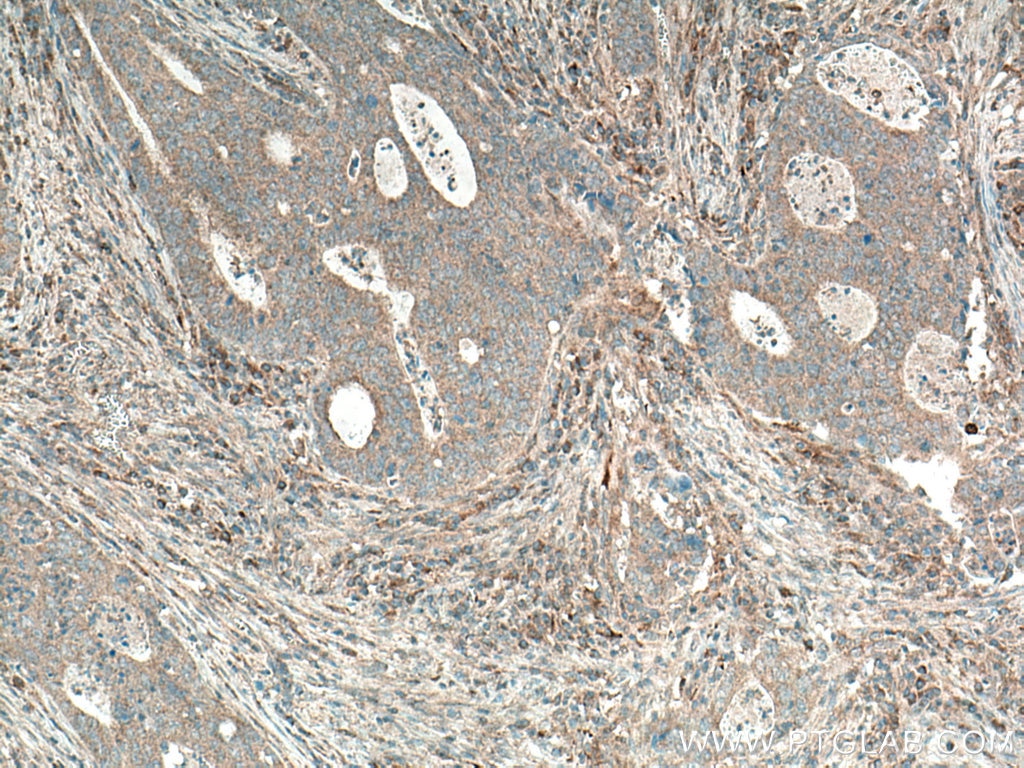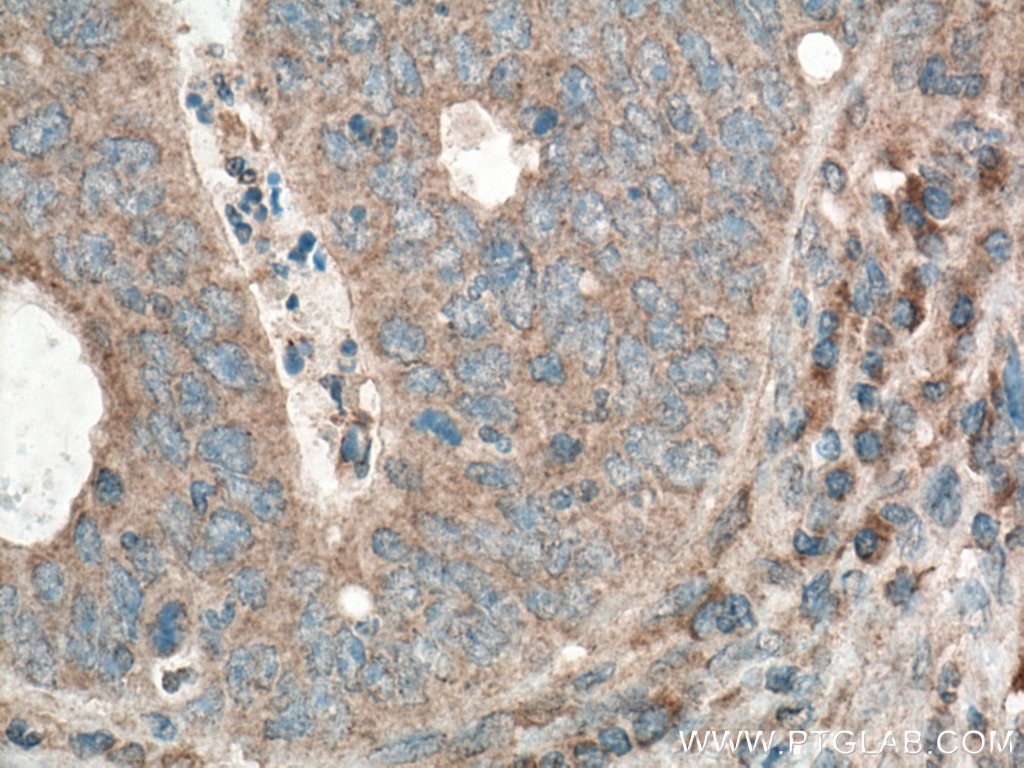ADAMTS4 Polyklonaler Antikörper
ADAMTS4 Polyklonal Antikörper für WB, IHC, ELISA
Wirt / Isotyp
Kaninchen / IgG
Getestete Reaktivität
human, Maus und mehr (2)
Anwendung
WB, IHC, IF, ELISA
Konjugation
Unkonjugiert
Kat-Nr. : 11865-1-AP
Synonyme
Galerie der Validierungsdaten
Geprüfte Anwendungen
| Erfolgreiche Detektion in WB | Maushirngewebe |
| Erfolgreiche Detektion in IHC | humanes Lebergewebe, humanes Kolonkarzinomgewebe Hinweis: Antigendemaskierung mit TE-Puffer pH 9,0 empfohlen. (*) Wahlweise kann die Antigendemaskierung auch mit Citratpuffer pH 6,0 erfolgen. |
Empfohlene Verdünnung
| Anwendung | Verdünnung |
|---|---|
| Western Blot (WB) | WB : 1:300-1:600 |
| Immunhistochemie (IHC) | IHC : 1:50-1:500 |
| It is recommended that this reagent should be titrated in each testing system to obtain optimal results. | |
| Sample-dependent, check data in validation data gallery | |
Veröffentlichte Anwendungen
| WB | See 17 publications below |
| IHC | See 2 publications below |
| IF | See 1 publications below |
Produktinformation
11865-1-AP bindet in WB, IHC, IF, ELISA ADAMTS4 und zeigt Reaktivität mit human, Maus
| Getestete Reaktivität | human, Maus |
| In Publikationen genannte Reaktivität | human, Hausschwein, Maus, Ratte |
| Wirt / Isotyp | Kaninchen / IgG |
| Klonalität | Polyklonal |
| Typ | Antikörper |
| Immunogen | ADAMTS4 fusion protein Ag2443 |
| Vollständiger Name | ADAM metallopeptidase with thrombospondin type 1 motif, 4 |
| Berechnetes Molekulargewicht | 837 aa, 90 kDa |
| Beobachtetes Molekulargewicht | 90 kDa |
| GenBank-Zugangsnummer | BC030812 |
| Gene symbol | ADAMTS4 |
| Gene ID (NCBI) | 9507 |
| Konjugation | Unkonjugiert |
| Form | Liquid |
| Reinigungsmethode | Antigen-Affinitätsreinigung |
| Lagerungspuffer | PBS mit 0.02% Natriumazid und 50% Glycerin pH 7.3. |
| Lagerungsbedingungen | Bei -20°C lagern. Nach dem Versand ein Jahr lang stabil Aliquotieren ist bei -20oC Lagerung nicht notwendig. 20ul Größen enthalten 0,1% BSA. |
Hintergrundinformationen
The ADAMTS (a disintegrin-like and metalloproteinase with thrombospondin motifs) is a family of extracellular metalloproteinases mediating diverse functions including matrix degradation, blood coagulation and angiogenesis. The ADAMTS family constitutes a group of proteins composed of 19 enzymes and 7 ADAMTS-like proteins. ADAMTS4 is a well-known proteoglycanase and has angiomodulatory properties. The 837 amino acid long human ADAMTS4 protein contains a long signal peptide, a prodomain, a metalloproteinase catalytic domain with zinc-binding motif, a disintegrin-like domain, a central TSR motif, followed by a cysteine-rich region with ten conserved cysteine residues, and a spacer domain. The full-length proform human ADAMTS4 (zymogen form) has been described to be 90 kDa. In extracellular matrix (ECM), ADAMTS4 undergoes further C-terminal cleavage at Lys694-Phe695 and Thr581-Phe582, respectively, to generate two other truncated forms-53 and 40 kDa (PMID:12202483).
Protokolle
| Produktspezifische Protokolle | |
|---|---|
| WB protocol for ADAMTS4 antibody 11865-1-AP | Protokoll herunterladen |
| IHC protocol for ADAMTS4 antibody 11865-1-AP | Protokoll herunterladen |
| Standard-Protokolle | |
|---|---|
| Klicken Sie hier, um unsere Standardprotokolle anzuzeigen |
Publikationen
| Species | Application | Title |
|---|---|---|
Acta Biomater ROS-responsive magnesium-containing microspheres for antioxidative treatment of intervertebral disc degeneration | ||
Bone Joint Res Suramin attenuates intervertebral disc degeneration by inhibiting NF-κB signalling pathway. | ||
Mol Med Rep Acetyl zingerone ameliorates osteoarthritis by inhibiting chondrocyte programmed cell death | ||
Inflammation Simvastatin Inhibits IL-1β-Induced Apoptosis and Extracellular Matrix Degradation by Suppressing the NF-kB and MAPK Pathways in Nucleus Pulposus Cells. | ||
Clin Exp Pharmacol Physiol Docosahexaenoic acid alleviates the excessive degradation of extracellular matrix in the nucleus pulposus by reducing the content of lncRNA NEAT1 to prevent the progression of intervertebral disc degeneration | ||
Oxid Med Cell Longev The Role of the miR-548au-3p/CA12 Axis in Tracheal Chondrogenesis in Congenital Pulmonary Airway Malformations |
